
The best parts of the pig. Get to know them, cook them!
We've already told you many things about the delights of Iberian ham, and we'll continue to do so because it's our reason for being, deeply ingrained in our DNA after all these years. However, we believe it's time to dedicate a separate chapter to pork meat, especially that of the Iberian pig. Remember that from the pig, every part is utilized!
And of course, its meat is another delight among the many that the pig provides us. We'll talk about the most outstanding and sought-after parts by consumers to serve on their table. We also sell these parts in some Enrique Tomás stores. Our expert butcher from Santa Coloma, Paqui, who is also a great cook, has given us some advice on how to cook these parts better and what products you'll find in our stores.
Of course, we're always seeking the best white pork and Iberian pork for our customers, as it should be!
Differences between white pork and Iberian pork
First, it's important to note that we're dealing with two different breeds, and therefore their meat will also have distinct characteristics.
In broad terms, the most commonly commercialized type of white pork in large supermarkets comes from the Landrace, Large White, and Pietrain varieties. Its meat is leaner than that of the Iberian breed, but the latter is juicier and more flavorful due to the marbled fat in the meat. In the case of Iberian pigs fed on acorns, this fat is natural and healthy.
At Enrique Tomás, we prefer the white pork from the Duroc breed, originally from the USA, because its meat is more flavorful. Keep in mind that this is the only white pig that can be crossed with the Iberian breed to make hams, as its genetic makeup is similar to the Iberian breed's due to its capacity to infiltrate fat into the muscle, making it juicier.
Pork Cut Diagram
The pieces shown in this image are all the parts of the pig that exist. As we've mentioned, every part of this animal is utilized, even the trotters. Discover how you can cook them and give it a try. It's so easy that you're sure to make something delicious.
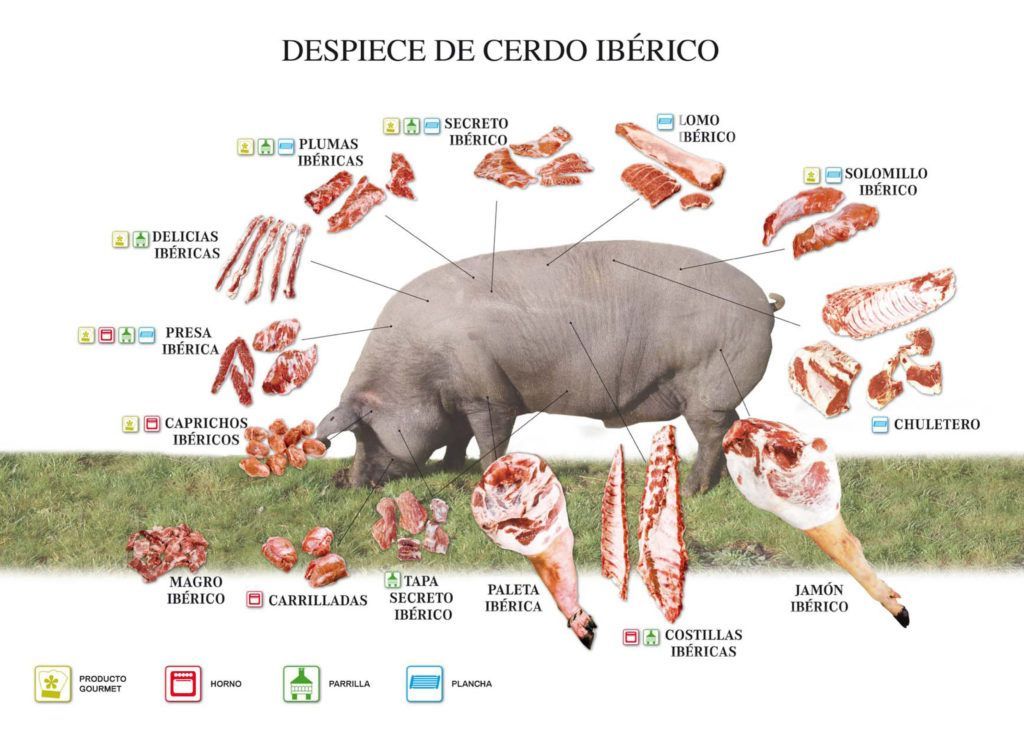 Pork Cut Diagram - Source: dialcosan.es
Pork Cut Diagram - Source: dialcosan.esMost Consumed Pork Parts
The best parts of Iberian pork, or at least the ones most commonly consumed, are the ribs, belly, loin, legs (used for hams and shoulders), and snout. Let's explain them one by one. Here we go!
Presa
If you're wondering which part of the pig is the "presa," we'll tell you. The Iberian "presa" is a cut found next to the shoulder, in the upper and front part of the loin. Two pieces of approximately half a kilogram each are obtained from each animal. It's round and recommended to be sliced.
Iberian "presa" contains quite a bit of intermuscular fat, which makes it juicy and flavorful. Grilling or griddling it is ideal, marinated or seasoned with spices like turmeric, thyme, black pepper, etc. To truly appreciate the meat's nuances, simpler is better.
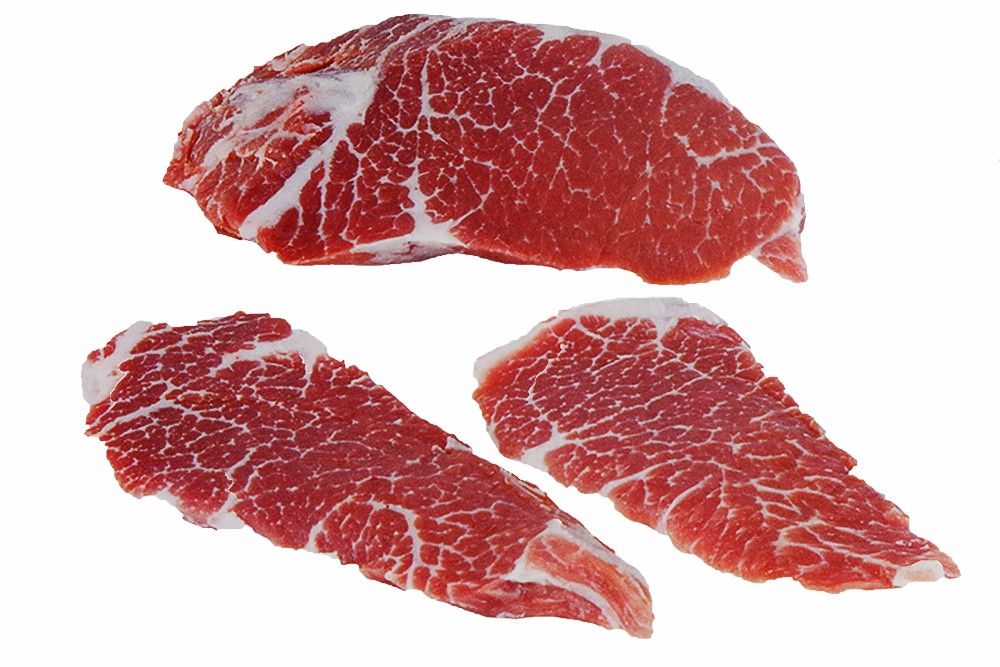
Secreto
For a long time, the "secreto" was a hidden gem among diners. Nowadays, everyone knows what part of the pig the "secreto" is, and it's a highly coveted gourmet bite, especially because it's exquisite, melting in the mouth like pure butter, very juicy due to the marbling of the meat, and it comes from an area near the shoulders of the animal, what you might call the armpit. Unlike the "presa," it's a very flat and thin piece, so it's recommended not to slice it before cooking.
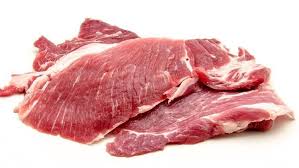
Loins
These are extracted directly from the area located in the pig's back, as the name suggests, and it's the piece found between the spine and under the ribs. The loin fillet is a whole cut that can be prepared into steaks for roasting, and it's also the basis for making Iberian loin. The latter is one of the least manipulated sausages, as it only requires seasoning the loin meat, stuffing it, and letting it cure. After about two months, the stuffed loin will be ready. Loin is one of the most well-known and widely used pieces in cooking. The most common is from the white pig. At Enrique Tomás, we also have it, both from the Duroc breed and from a white pig raised with Galician chestnuts, which is simply delicious. We always aim to add extra value to our meat products, regardless of the type, focusing on quality and maximum flavor without neglecting the health factor. If it's Iberian loin, we'll discuss the marbling in the meat that distinguishes it from common loin, which is leaner and slightly drier when served. Loin is great grilled, griddled, with Roquefort sauce, pepper sauce, or lemon sauce.
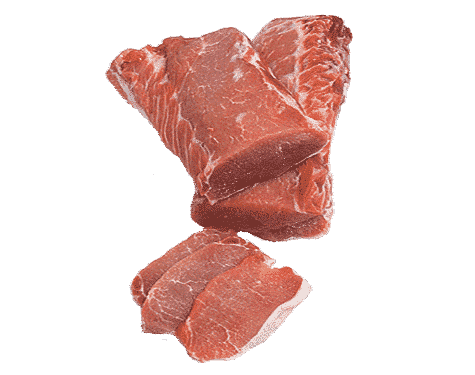
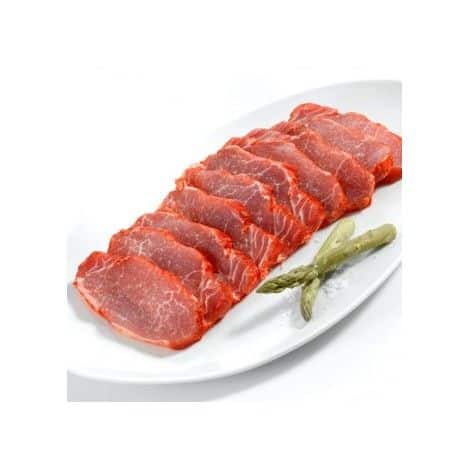
Ham
From the ham, also known as the back leg or hind leg, the most famous product of Spanish gastronomy is obtained: the ham. The ham is considered a gourmet product and it's been a symbol of Spanish culture for a long time, with a unique flavor and aroma.
At Enrique Tomás, we also offer the white pig's ham, which comes from the Duroc breed, just like the shoulder. In both cases, we seek maximum juiciness and flavor. The diet of this breed, fed with natural cereals, and in some cases, chestnuts and legumes, gives the meat a very special and unique touch. It's leaner meat, but still juicy due to its genetic characteristics. It's also very flavorful and is the perfect product for those looking to introduce themselves to the world of ham in a more affordable way.

Snout
A very traditional product is made from the snout, also known as the muzzle, and it's usually eaten in a Vinaigrette, with boiled egg and tomato, with a little bit of olive oil on top. Another way to enjoy it is by cooking it and then battering and frying it, similar to breaded and fried chicken. It's crunchy on the outside and tender on the inside, with a taste that's hard to explain if you haven't tried it.
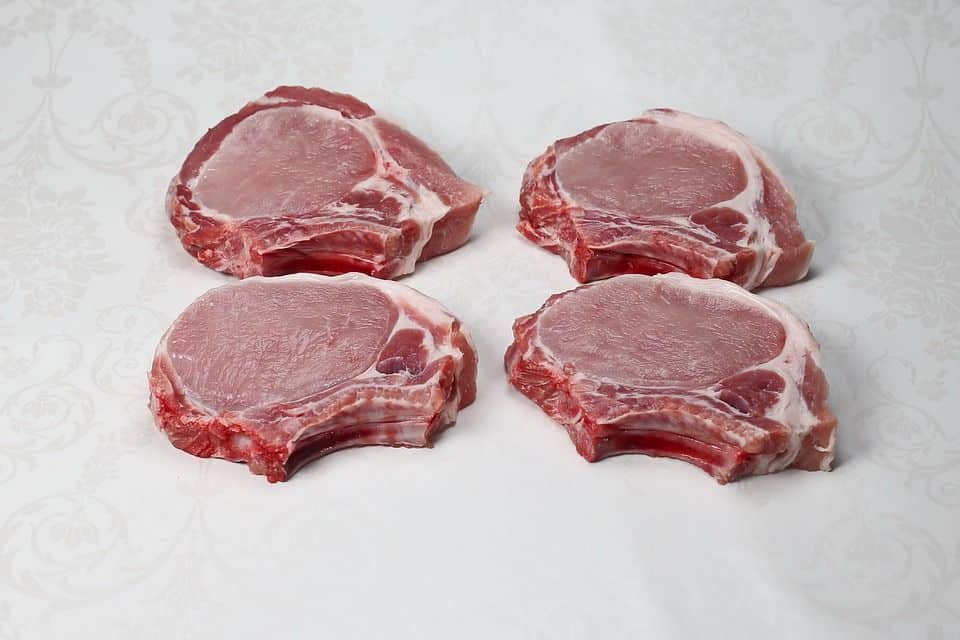
Ribs
Rib meat is one of the most succulent, especially when cooked on the grill. It's a product that's easy to cook, but you need to be patient because it takes a while to cook, especially if it's done on a low heat. We can buy the ribs without the rest of the ribcage and it's a very juicy, soft, and delicious meat.

Belly
From the belly, we can make a lot of different products. The most well-known is bacon, which is made with the layers of meat and fat that are between the skin and the ribs. There's also bacon that comes from the back of the pig, which is leaner and doesn't have skin. Another product that's well-known all over the world is the loin with a streaky layer. It's a piece that contains a lot of fat, which makes the meat very juicy. It can be used for roasting or making stews.
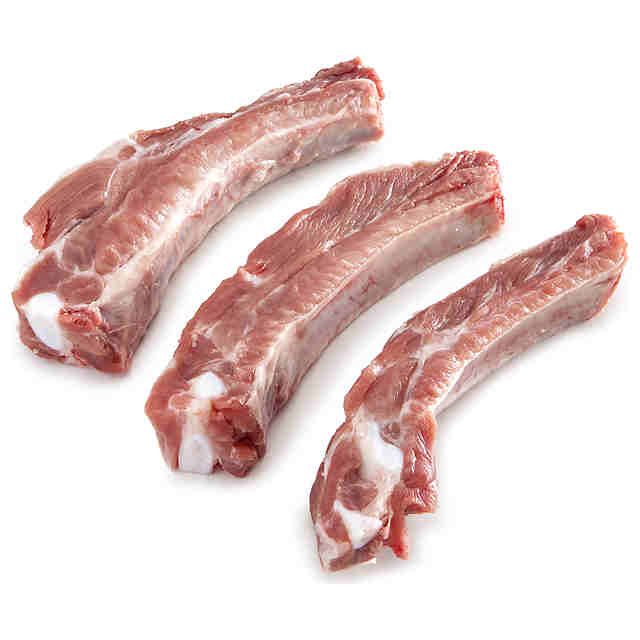
Pork Tenderloin
The pork tenderloin is one of the most lean and tender cuts of pork meat, and once again, if it's Iberian, it will be even juicier due to the additional marbled fat. It's an elongated and rounded piece from the upper rear part of the animal.Due to its tender and juicy texture, it can be prepared in many ways, oven-roasted with herbs like thyme, mint, and seasoned with garlic and pepper. There are numerous recipes and ways to prepare the whole tenderloin or as medallions, stewed in wine, with apple sauce, in a vegetable stew, with onions and chestnuts... we invite you to try them and let us know.

Hams
Hams are the star product of Spanish gastronomy and are produced from the hind legs of Iberian pigs. The taste of Iberian hams is very distinctive because, unlike hams obtained from other white pigs, they are much juicier due to the infiltration of fat into the muscle.
They can be of three types based on the pigs' diet: fed with grains, pasture-raised, or acorn-fed, with the latter considered the highest quality. This delicacy is often enjoyed raw with a bit of bread and oil, but it can also be incorporated into various dishes, such as lentils or ham croquettes.

Enrique Tomás' Five Hams
Shoulders
Shoulders are the cured meat produced from the front legs of pigs, and what sets them apart from hams, in addition to the pig's area they come from, is their more intense flavor. The curing process used to obtain them is the same as for hams, but slightly shorter. Additionally, shoulder slices are also eaten in sandwiches or stews. At Enrique Tomás, you can also buy top-quality Iberian shoulders.
Other Pork Cuts
We're not done yet! As we always say, every part of the pig is utilized, so the list continues. Check out these other pork cuts and start thinking about how to prepare them.Pork Jowl or Neck
Another type of pork meat is the jowl, which is primarily fat, making it a very juicy area of the pig. As its name suggests, it's the part that hangs from the animal's face.Cheek
The cheeks are another part of the pig suitable for cooking. They correspond to the jaw. Being a very muscular area, it has a lot of intramuscular fat that turns this part of the pig into a delicacy that melts in your mouth.Snout
It's a meat extracted from the head and is usually eaten roasted as a tapa. It's easy to find in bars and restaurants throughout Spain, and it's so crispy that just thinking about it makes us hungry!Ears
Ears have a cartilaginous texture, and in some places, they're used for flavoring dishes rather than eating them. However, as you know, we like to make use of every part of the pig, so we recommend trying ear tapas, which are delicious. They can be boiled and seasoned, and if you've never tried them, don't hesitate any longer – you'll see how wonderful they are.Tongue
It's a gelatinous piece of pork, so the best way to enjoy its flavor is by preparing it as a stew. It's also used in sausages.Shoulder Butt
This part of the pig is located at the upper part of the neck and is very juicy due to its fine layers of fat. It can be eaten as pork shoulder steaks. They're delicious!Pig Trotters
Pig trotters are another edible part of the pig. They are a typical dish in Catalan cuisine, but their enjoyment extends throughout Spain. It's the part of the pig that touches the ground and has a very gelatinous texture. That's why it's often used in stews, although it can also be enjoyed on its own.Pig Tail
It can be prepared as a main dish or as a side in stews. Fried pig tail is also a delicacy. This part has a very gelatinous texture, adding a lot of flavor to dishes.Blood
We even make use of the pig's blood! It's used especially for making sausages and products like blood sausage. It's widely used in Catalan cuisine to make "butifarra negra" and also in Galician gastronomy where they make their typical dessert "filloas de sangre," a kind of delicious crepe.Testicles
Not everyone wants to try testicles when they know where they come from. Pig testicles are suitable only for the less squeamish. We recommend trying them boiled in their broth and drawing your own conclusions.Brain
Brains are another edible part of the pig. Like with testicles, not everyone dares to try them, but most who do, repeat. It can be tried fried, grilled, or breaded. In all ways, it's an exquisite delicacy.What other parts of the pig must I definitely try?
In addition to the mentioned pork cuts, there are two other pieces of meat that are equally delicious: chorizo and salchichón. These aren't cuts per se; they are produced by mixing meat obtained from different parts of the Iberian pig, and once integrated, they're seasoned with spices – paprika for chorizo and black pepper for salchichón.
Like ham and shoulders, they are eaten raw or in stews, especially chorizo, which in Spain is used as a main ingredient in dishes like lentils or fabada, among many others.

That being said, now that you know the best parts of an Iberian pig, which one are you going to savor? We're sure that whatever you choose, you'll enjoy it like never before.



